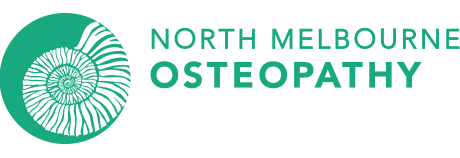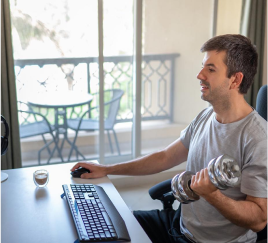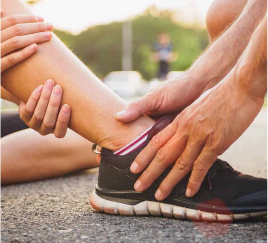People of all age groups seek osteopathic treatment most commonly for musculoskeletal complaints including:
- Neck and Back Pain
- Repetitive Muscle Strains
- Sporting Injuries
- Headaches and Migraines
- Jaw Pain
- Arthritis and Joint Pain
- Muscular Pain
- Pregnancy Related Pain
- Sciatica
- Scoliosis
- Postural Problems
- Tennis Elbow
- Tendonitis
- Hip, Knee and Foot Pain
- Shoulder, Elbow and Wrist Pain
- Injuries from work or road accidents
We use a wide range of gentle treatment techniques including:
- Soft tissue massage and stretching techniques
- Articulation/mobilisation techniques: the movement of joints through their range of motion in order to restore function.
- High Velocity Low Amplitude techniques (HVLA): the technical term for manipulation, whereby the Osteopath uses a gentle method of maintaining precise positioning of a joint, followed by a mild thrust action.
- Muscle Energy techniques (MET): in which tight muscles are gently released by alternately being stretched and made to work against resistance. This helps to restore function to the muscles and surrounding joint structures.
- Counter-strain techniques: in which a release of restriction is achieved by the placement of the affected joint or muscle in a position of comfort, while applying a ‘counter’ stretch to the antagonists of the tight muscles.
- Functional techniques: whereby the dysfunctional joint is placed into its preferred resting position, allowing a gentle release of the joint to occur.
- Osteopathy in the Cranial Field / Biodynamic Approach: gentle release of all structures using the fluid forces of the body.
- Dry needling (using acupuncture needles): increase blood supply to a specific area and promote muscle relaxation and fluid drainage
At North Melbourne Osteopathy, we will also provide you with specific stretching and strengthening exercises. This will allow you to be in control of your condition and manage your symptoms away from the clinic.
The first visit to an osteopath will run along the same lines as an initial visit to a GP. A complete medical history is taken and questions asked about lifestyle, diet and emotional status. The osteopath will want to hear about all symptoms, as well as details of any past accidents or traumas, even if they may seem unrelated to the patient’s current problem.
The osteopath will then perform a musculoskeletal assessment, observe how the patient is using their body, identify any obvious mobility impairment and evaluate posture. Neurological and orthopaedic tests help the osteopath to eliminate possible underlying pathologies and differentiate the basis of the patient’s complaint.
Osteopaths are highly trained to manually locate points of restriction or excessive strain in various parts of the body. Using a finely tuned sense of touch or palpation, the osteopath will assess the spine, joints, muscles and tendons. An osteopath may also refer for further testing (X-rays) to confirm findings, or review existing diagnostic results where available.
The initial consultation will take around 45 minutes to complete, after which the osteopath will be able to offer a diagnosis and discuss a treatment program. Treatment could include such techniques as soft tissue (massage) stretching, to increase blood flow and improve flexibility of joints and muscles; articulation to mobilise joints by being passively taken through their range of motion; dry needling muscle energy, to release tightness on the muscles by alternatively being stretched and made to work against resistance
If the diagnosis is one that requires further investigation or specialist intervention, an osteopath will suggest a referral to an appropriate practitioner. Osteopaths often treat in conjunction with a GP, dentist, podiatrist or other health care professional.
Because osteopathy emphasises self-healing, an osteopath may also advise, home exercise programs and lifestyle adjustments. All treatment programs are highly individualised and depend on the patient’s current condition, past history, and ability to adapt to change. Determining number of consultations/treatments: Different conditions and individuals will require a different number of treatments to help get you back on track. In general, the longer you have had a condition, the longer it may take to resolve or become properly managed.
Some people find they only need a few consultations, some with more persistent problems require more. A management plan and treatment approach will be discussed with you at the time of consultation.
Osteopathic treatment involves safe, gentle and effective manual techniques, including soft tissue stretching, mobilisation, inhibition and manipulation. These techniques assist in improving elasticity, strength, endurance, mobility and performance as well as minimise reinjury and allow a quicker return to physical activity.
Before treating your child or yourself, the osteopath will perform a comprehensive physical examination and refer to other health care professionals if necessary. The osteopath can also provide strategies, exercises and routines to help your family members avoid further injury and stay healthy and active.
Osteopathy can be an effective method of alleviating pain and discomfort caused by pregnancy. The massage and manipulation of the joints, muscles and musculoskeletal system works as a great complement to prenatal care, and it can work to help reduce stress and anxiety that occurs during pregnancy.
The musculoskeletal manipulation techniques utilised by osteopaths are designed to ease the tension of the muscles, joints, tendons and ligaments. Effective treatment of these parts of the body, as well as effective trigger point therapy (an incorporated method of osteopathy) can help relieve the effects of migraine. If we find that the patient’s migraines are not treatable through osteopathic methods, we will refer them on to a different specialist.
To Book An Appointment simply click on the book now icon on the top right hand corner to select a time. Alternatively you can call us on 03 9326 3130.
We say no. After all, alternative medicinal practices can pretty much spring up out of nowhere, and certain “alternative medicine” providers often don’t require any training or certification at all. We undergo extensive university training (five years minimum) and placements to receive governmentally registered certification so, no, we don’t believe it is “alternative medicine”.
Unfortunately at this time osteopathy is only covered by Medicare if you are on an Enhanced Primary Care (EPC) scheme from your general practitioner. This allows for patients with ongoing conditions to receive up to five years of allied health care.





